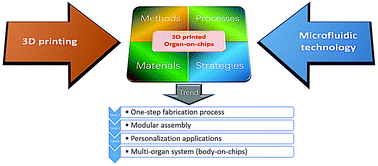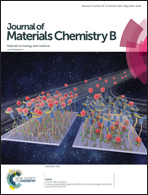The crossing and integration between microfluidic technology and 3D printing for organ-on-chips
Abstract
Organ-on-chips were designed to simulate the real tissue or organ microenvironment by precise control of the cells, the extracellular matrix and other micro-environmental factors to clarify physiological or pathological mechanisms. The organ chip is mainly based on the poly(dimethylsiloxane) (PDMS) microfluidic devices, whereas the conventional soft lithography requires a cumbersome manufacturing process, and the complex on-chip tissue or organ chip also depends on the complicated loading process of the cells and biomaterials. 3D printing can efficiently design and automatically print micrometre-scale devices, while bio-printing can also precisely manipulate cells and biomaterials to create complex organ or tissue structures. In recent years, the popularization of 3D printing has provided more possibilities for its application to 3D printed organ-on-chips. The combination of 3D printing and microfluidic technology in organ-on-chips provides a more efficient choice for building complex flow channels or chambers, as well as the ability to create biological structures with a 3D cell distribution, heterogeneity and tissue-specific function. The fabrication of complex, heterogeneous 3D printable biomaterials based on microfluidics also provides new assistance for building complex organ-on-chips. Here, we discuss the recent advances and potential applications of 3D printing in combination with microfluidics to organ-on-chips and provide outlooks on the integration of the two technologies in building efficient, automated, modularly integrated, and customizable organ-on-chips.



 Please wait while we load your content...
Please wait while we load your content...